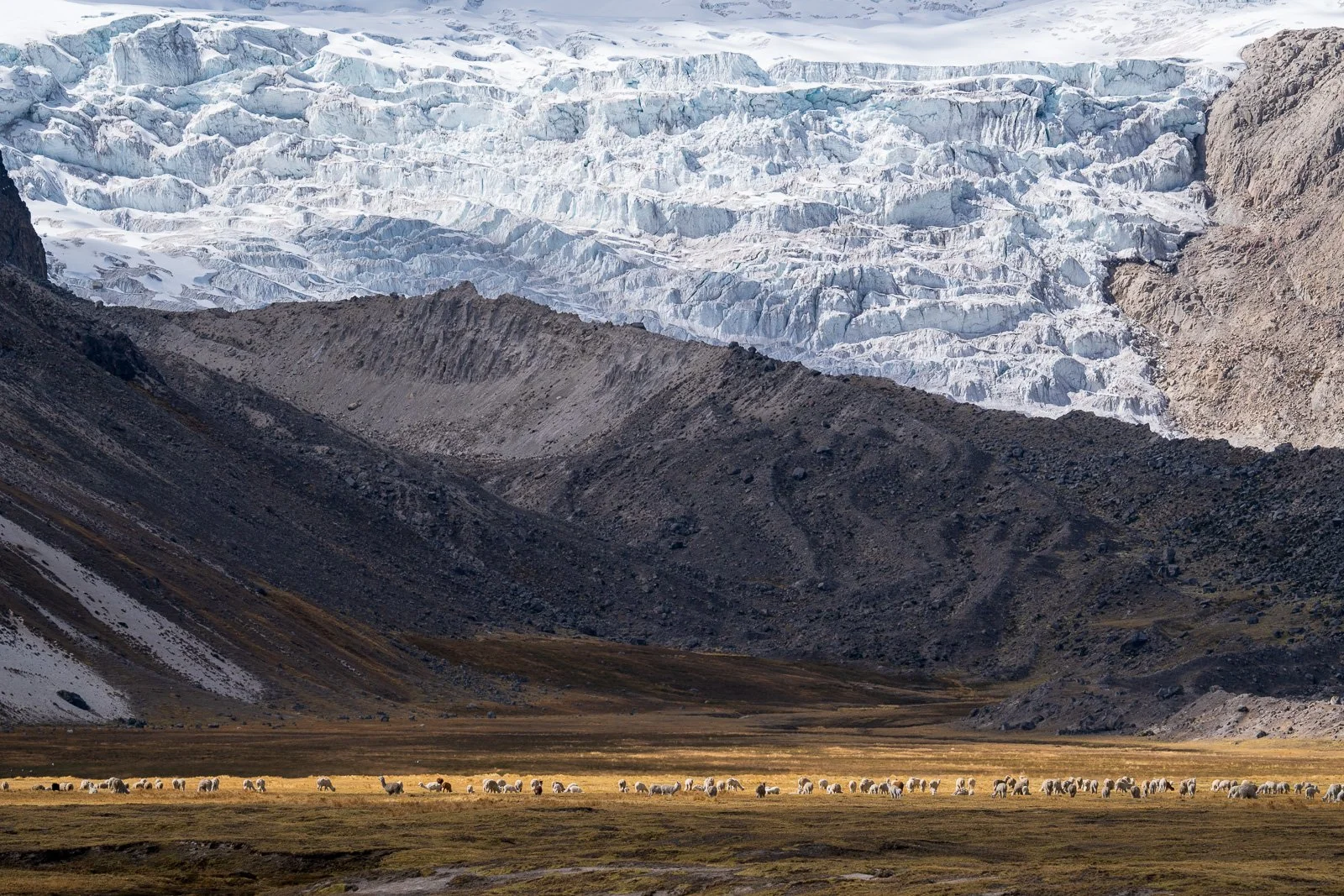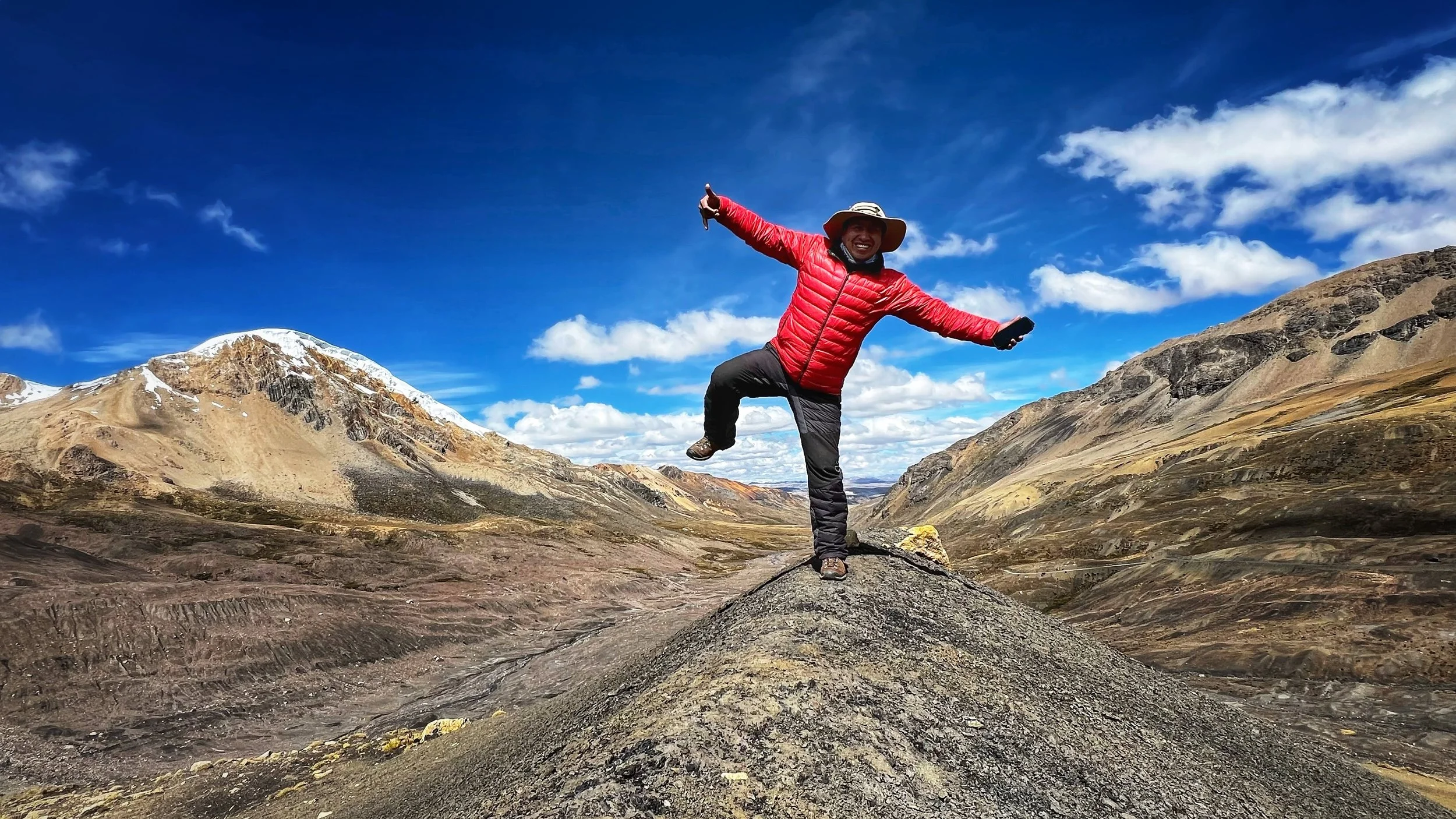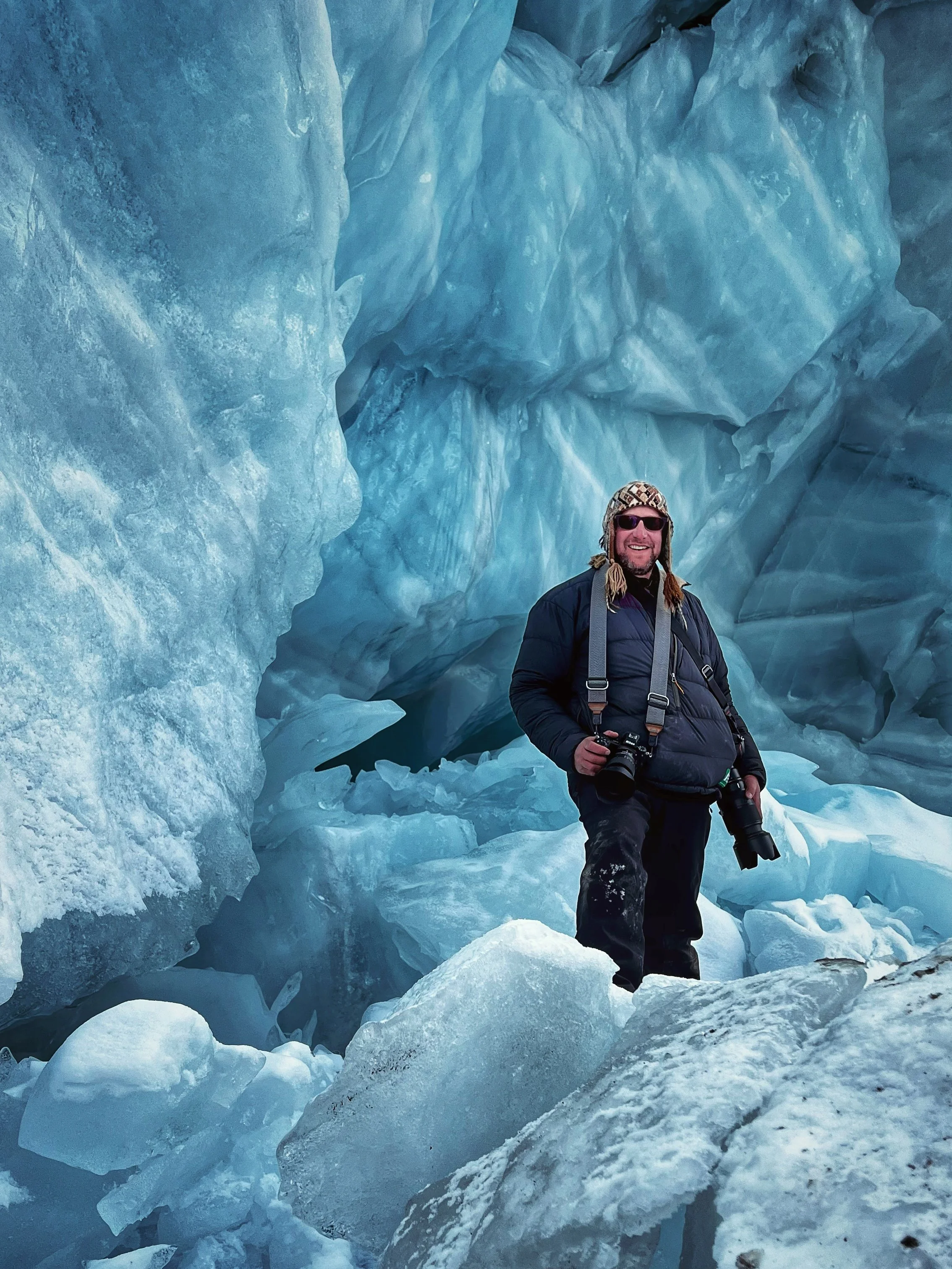Quelccaya - Fourth Time’s The Charm
Quelccaya Ice Cap
After returning from the religious festivities of Qoyllur Rit’i, I immediately had to repack my gear and equipment to depart for the Quelccaya Ice Cap.
The main outflow of meltwater from the Quelccaya Ice Cap.
I would be joing a group of scientists going to the Quelccaya Ice Cap to conduct fieldwork. I had attempted to visit the region on three separate occasions and had my plans fall apart at the last minute all three times. It was incredibly frustrating and disheartening as it is an important part of my project.
Qori Kalis Glacier with alpacas in the pastoral lands below.
However, the fourth time was the charm, and it was clear why the previous attempts to visit the ice cap had not materialized. This trip and the work being done by the team of scientists was perfectly aligned with the focus of my project.
The Quelccaya Ice Cap is the single largest ice mass in the tropical regions of the world, and over the past fifty years it has shrunk by approximately 40%. The surrounding glaciers of the region have suffered a similar fate.
A hiker stops to take a selfie inside the Suyuparina Glacier.
If you have followed along with some of my previous blog posts or followed me on Instagram, you may have read about the hike I did in January of this year in the Vilcanota Range. This hike was not possible to do up until the late 1990’s because glaciers covered the entire Vilcanota Range. As a result of climate change, the glaciers have receded to the point that the mountain range is now passable. Hence, the hike is referred to locally as the hike of climate change.
The leading edge of a receding glacier.
The team is working on a multi-year project that is monitoring the changing precipitation amounts and types. Less snow means less insulation for the glaciers and increases the rate of their reduction. They are also measuring the outflow of meltwater to understand the rate of the melting ice.
Alpacas grazing in the bofedales below Qori Kalis Glacier.
They are focusing on how these changes are effecting the pastoral lands of the Andes mountains, and are escpecially interested in the impact and changes to the wet meadows of the high plains, known as “bofedales”. The bofedales and the pastoral lands of the region are essential to the livelihood and culture of the people of the region. Little grows at this elevation other than grasses and mosses, and the people rely on herding alpacas.
Measuring the outflow of meltwater from the Quelccaya Ice Cap
Installing a GPS base station.
A photo from 1978 taken at the same location showing the extent of Quelccaya’s retreat.
My work focuses on culture and the the environmet and how they shape one another. This was an excellent opportunity to get the scientific perspective to the changing environment, and I am extremely grateful to the team from The Institute of Science and Technology Austria (ISTA) and their Peruvian partners on the project, The National Institute for Research on Glaciers and Mountain Ecosystems (INAIGEM). Thank you immensely to Cat, Joshua, & Miguel, as well as Renny, Christian, & Aracely. Also, a special thanks to Nilton Montoya from UNSAAC for making it all happen.
Weather station
You can read and learn more about the project here:
Our mountain guide Adrián
Also, a special thank you to our guide Adrián Ccahuana. He is a new friend, and I am quite sure he and I will be doing more trips together in the future.
Installing a camera at a weather station below Quisoquipina Glacier.
I have received so much support and assistance along the way on this project for which I am eternally grateful. This project would never have gotten anywhere without the support and collaboration I have had along the way.
Thank you to the Apus!
A sliver of sunlight on an alpaca at sunset.
Alpacas
I plan to return to the region soon to gain the perspective of the Alpaca farmers of these pastoral lands who know the land possibly better than anyone. I want to hear what they say about the changes they are witnessing, from people who have lived on this land for many generations.
Alpaca farmers Humberto and Juana with their guard dog.
I have a few more photo excursions lined up for the coming weeks but I will be back to Phinaya again soon.
Thanks everyone!
MB

















